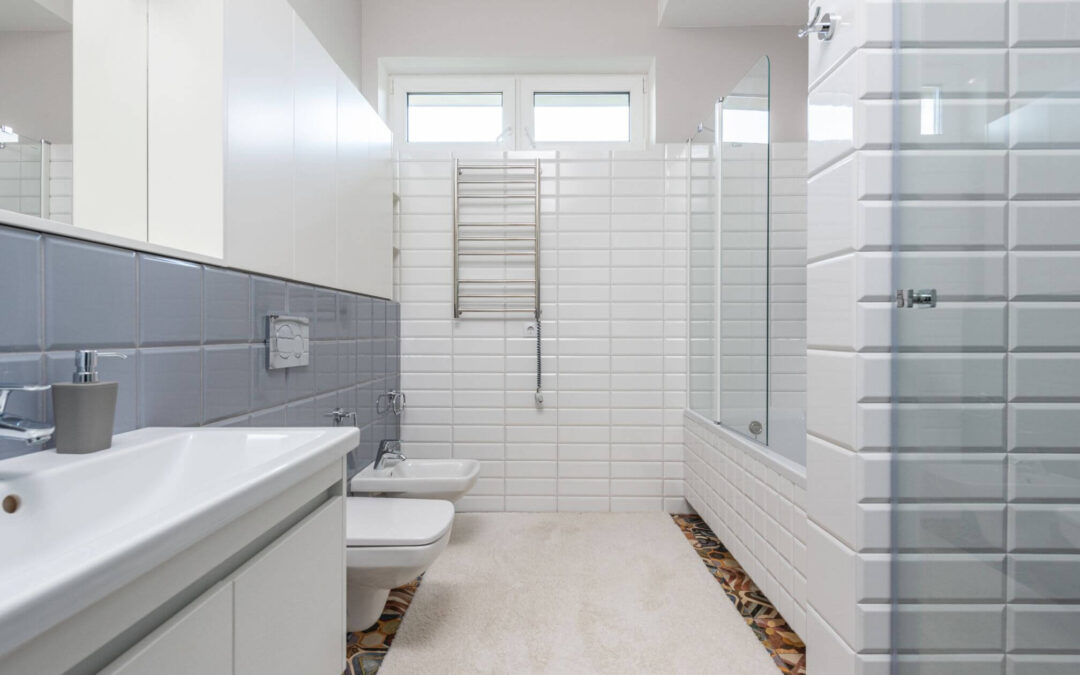Bathroom remodeling or renovations can be a great way to update and improve the look and functionality of your home. However, many homeowners make common mistakes that can end up costing them time and money.
From poor planning to overspending, there are several pitfalls to avoid when taking on a bathroom renovation project. In this article, we will explore some of the most common bathroom renovation mistakes and provide tips on how to avoid them, ensuring that your renovation goes smoothly and stays within budget.
Planning and Design Mistakes
When renovating a bathroom, many homeowners don’t plan, which can spell disaster, particularly in small bathrooms. Consult an interior designer first to maximize layout and flow. Their valuable insights spotlight clever storage solutions and pretty yet practical design elements customized to the space.
Don’t overlook stocking necessities during the planning phase. Despite bathrooms’ compact size, sufficient storage proves essential for tucking away toiletries, towels, and other essentials. Built-in shelves, cabinets, or hooks keep priming products and cleaning items organized and out of sight behind closet doors.
We all need room to tuck such bathroom stuff out of view. Streamlined storage solutions prevent chaotic jumbles of shampoo bottles and soaps cluttering up tight quarters, promoting a calm, spa-like environment for unwinding at day’s end as well as beautifying morning routines.
With some clever planning, even the coziest bathroom remodels can maximize function and aesthetics. A little upfront effort pays off for years.
Also Read:
Best Flooring Option For Bathrooms
Budgeting and Financial Considerations
Carefully budget for bathroom renovations. Small spaces come with big price tags, especially when installing new finishes and fixtures. Allocate funds wisely to maximize improvements.
Consider hiring professionals, even though DIY may seem cheaper. Amateur mistakes can require expensive fixes, costing more overall. Weigh all costs upfront.
Build flexibility. Unforeseen expenses frequently crop up mid-project. Faulty wiring, water damage, etc. add costs.
With realistic numbers and professional help, you can create an Instagram-worthy bath without overspending. Plan and expect added expenses to finish successfully within budget.
Trends and Aesthetics Pitfalls
When remodeling your bathroom, balance trendy styles with functionality. Choosing cabinets or tiles only for their looks can backfire. Make sure cabinets fit your storage needs. Going all small tiles can make the room seem cramped.
Mix in some medium tiles to keep the space feeling open. Pay close attention to grouting between tiles. If done well, it can make the finish look smooth. Taking time to tile and grout carefully will give a clean, uniform look that lasts. The goal is a stylish bath that works well and avoids impulsive choices you’ll regret.
Skill and Expertise Errors
Don’t overestimate your DIY skills when renovating a bathroom. Tempting as it is, recognize when you need a pro. Their expertise in tiling, grouting, ventilation, and more can save money and headaches later.
One common mistake is inadequate ventilation. Good airflow controls moisture, odors, and mold – overlooked things that lead to big repairs and health issues if ignored.
Another is amateur plumbing. Botched pipe connections cause leaks, water damage, and expensive fixes. Hiring a plumber to handle this critical task properly the first time.
The goal isn’t a perfect DIY project. It’s a functional, problem-free bathroom. Knowing your limits allows you to focus energy where you add the most value, and bring in experts where you need them.
Flooring and Tiling Blunders
A properly tiled bathroom floor starts with good preparation. Make sure to thoroughly clean and level the floor before laying the tiles. This provides the smooth, even foundation needed for proper adhesion and alignment.
The type of tile also matters. Opt for durable, water-resistant materials that withstand heavy use and moisture, like ceramic. Additionally, consider finish. Glossy tiles become slippery when wet. Choose a matte or textured finish to prevent slips and falls.
Taking the time to correctly prep the floor and select appropriate tiles pays dividends for years through enhanced aesthetics, performance, and safety. Avoid common mistakes upfront and set your bathroom tiling project up for long-term success.
Ventilation Neglect
Don’t overlook ventilation when renovating a bathroom. Good airflow is crucial for controlling moisture, odors, and mold – preventable issues that otherwise lead to health problems and damaged fixtures.
Without fans exhausting damp air out, excess humidity will foster unhealthy mold growth. Mildew stains and foul smells may plague a poorly ventilated bath.
Install a quality, appropriately sized exhaust fan to maintain air quality. Proper CFM ratings (cubic feet per minute) match the ventilation needs of different square footage. This provides sufficient ongoing moisture and odor control while preventing deteriorating conditions that can harm surfaces and users alike.
Making ventilation a priority keeps your bath fresh, safe, and looking its best for years on end. Don’t let poor air circulation undermine all your hard work.
Building Codes and Regulations Oversight
Renovating a bathroom? Don’t overlook building codes. These regulations exist to ensure safety and proper function.
For one, fixture dimensions often have minimum and maximum size requirements. Carefully measure and select compliant bath hardware.
Another key area is plumbing. Tasks like installing new faucets or pipes require professional work with proper permitting. DIY plumbing risks hazardous code violations.
Electrical outlet and light fixture placement also have specific recess depth rules to prevent contact hazards. Ignore them at your own risk.
The goal isn’t finding creative workarounds. It’s delivering a compliant, hazard-free bath renovation. Follow all codes upfront to avoid headaches from inspectors or dangerous flaws down the road. Safety first.
Waterproofing Mistakes
Waterproofing is key for preventing bathroom moisture damage. Prioritize surfaces prone to water contact such as toilets, tubs, showers, and storage.
Carefully seal the toilet base and surrounding floor to block water from seeping into sublayers. Waterproof shower walls and floors too, avoiding leaks into other areas. Even built-in shelves and cabinets need protection from frequent splashing during daily routines.
The goal isn’t just cosmetic tile. It’s comprehensive waterproofing for long-term durability. Keep moisture restricted to easily wiped surfaces, not absorbed into vulnerable corners underneath. Done right, waterproofing provides lasting defense against leaks, warping cabinets, and mold – saving you from expensive repairs down the road.
Storage and Organization Oversights
Don’t overlook essential storage needs when remodeling a bath. To avoid constantly running out of toilet paper, use accessible holders with the capacity for extra rolls.
Organization is also key to preventing chaotic clutter. Invest in storage hooks, well-placed cabinets, and sufficient lighting. This keeps daily items like cosmetics, towels, and medications neatly organized and within easy reach.
Smart storage options that fit your needs will save you trouble in the long run. Keep the things you need on hand and avoid having to search through a disorganized mess in the morning. Having a place for everything makes getting ready for the day go more quickly.
Lighting Errors
Lighting makes or breaks a bathroom’s functionality and ambiance. Relying on a single overhead fixture creates uneven, inadequate lighting that hampers tasks. Instead, layer ambient fills, targeted task lighting, and accent lighting.
Strategically place sconces to illuminate specific areas like the mirror. Quality fixtures sized appropriately for the space provide bright, even lighting without overwhelming small baths.
Also, choose bulb color only temperature-wise. Stick to warm white or daylight to provide bright, inviting light in your bathroom. The wrong hue can make the space feel dull and cold.
The goal is lighting tailored to how the room is used. Layered fixtures and thoughtful bulb choices provide flawless function and a flattering ambiance. Don’t settle for uneven shadows or sterile fluorescent glows. Quality lighting brings the rest of your design to life.

